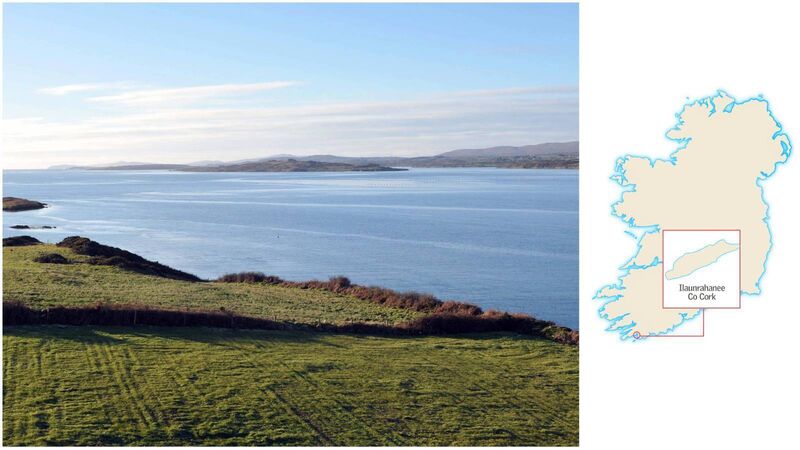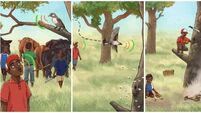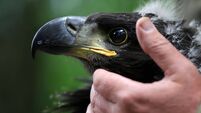Islands of Ireland: A 'speck' of an island which has seen storms and tragedy

Islands of Ireland: Ilaunrahanee viewed from Cunnamore Point in West Cork. Picture: Dan Linehan
This really is a speck of an island and barely worth a second glance for those strolling near Cunnamore Point in West Cork just off the Skibbereen to Ballydehob road. It gives definition to the shoreline which stretches away east from this southern aspect of Roaringwater Bay to the northside of the bay and Kilcoe Castle. The range encompasses islands large (Castle, Horse) and small (the Skeams) as well as several tiddlers such as Goose Island and Coolim with its lovely arch.
Ilaunrahanee is more properly an islet in geographic terms and has never had human habitation, though it is possible animals may have grazed its tiny proportions. In fact there are no signs of human activity whatsoever, least of all a pier to allow the curious a landing point.
Ilaunrahanee (also Illaunranhee) translates as the Island of the Ferns (Oileán Raithní) and if ever an island were well named then this is it. However, several of the other islets around could claim the same reason for their name. There is a second Illaunrahnee which lies just off Mannin Island on the north of the bay and yes, it too is covered in ferns.
The island was put up for sale in the 1970s with one commentator writing that “before you rush off to buy it there are a few snags. In bad weather the island can be almost submerged by raging seas”.
What propels Ilaunrahanee into the historical record is its location of a tragic drowning in 1904. Other of Roaringwater Bay’s islands have seen boats large and small wrecked with lives lost over the years, including: the Stephen Whitney which sank at Calf Island West in 1847 with 92 people drowned, and the Thomas Joseph at the Catalogue Islands beside Sherkin Island in 1918 with six people drowned.
Ilaunrahanee’s role in this episode was incidental in that the men who died were not intending to land there, but were just passing next to it. The story goes that five men from Heir Island set out in a lobster yawl to cut willow rods which they would use to make lobster pots, as well as to buy supplies in Ballydehob on the far side of the bay. The incident is covered by Eugene Daly in his comprehensive study of the history of Heir Island from whence the men hailed.
The five men were: Cornelius O’Driscoll; Cornelius Cahalane; John and Daniel Harte; Denis O’Neill. They had spent the day cutting the rods and by evening it was time to return home to Heir Island. However, by now the sky had darkened considerably and the wind had whipped up dramatically. Having largely skirted the land from Ballydehob the men’s small boat was by now tossed around like a cork. Adjacent to Ilaunrahanee, and just about 1km from home, the inevitable happened. The boat was hit by a huge squall and the men were thrown into the sea. Quoting from the Southern Star four days later, Daly writes: “The wind was increasing, the darkness becoming thicker, the breakers rose and buffeted the boat, lifting the despairing men up on the crest of a wave and then dashing them down again, sometimes losing their slender hold, quickly causing them to exhaust their strength."
By now O’Neill had become entangled in the rigging but was somehow cut loose by Cahalane. At this critical point, the latter cut off his heavy boots and made an attempt to swim for shore and raise a rescue party. The men began to recite the Rosary, writes Daly. After a monumental effort, Cahalane made it to shore and a boat was immediately launched from Cunnamore into the teeth of the storm.
Searching by now in complete darkness they eventually found the upturned boat but with just one man, John Harte, desperately clinging to the gunwale in a ‘dead man’s hold’. Harte was in a parlous condition, and was anointed by a priest, but pulled through. He would go on to assist in several sea rescues in the ensuing years.
The other occupants of the yawl were not so lucky and all three perished, their bodies washed up in the following weeks.
: Best viewed from the mainland at Rincolisky Castle at Cunnamore Point.
: , by Eugene Daly, Heron’s Way Press. With thanks to the Skibbereen Heritage Centre and Coolim Books







